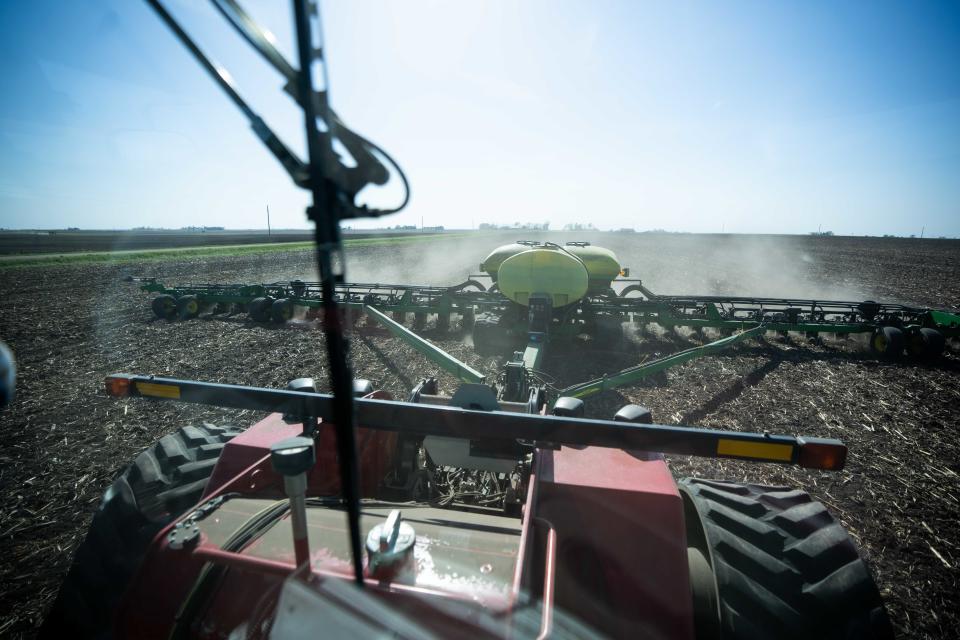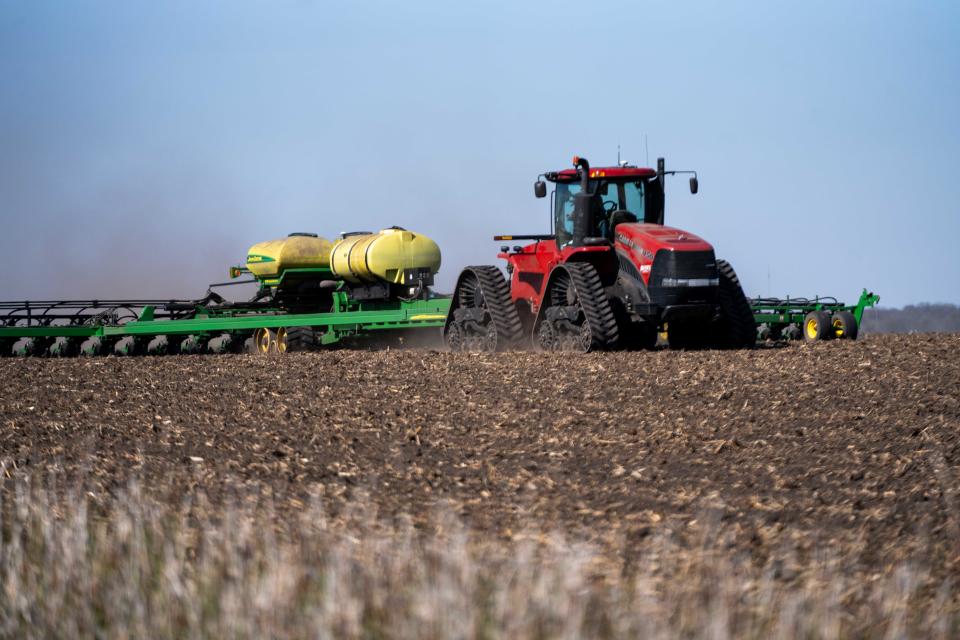Northern Lights that lit up weekend skies played havoc with Iowans' tractors, spring planting
After days of rain, Jolene Riessen’s family was able to finish planting the last acres of corn on their northwest Iowa farm this weekend.
But it wasn’t easy.
The solar storm that caused the northern lights to erupt in the nighttime skies over Iowa, shimmering in waves of reds, greens, purples, pinks and blues, played havoc with the Riessens’ tractor as they planted Saturday and Sunday.
Across the country, it disrupted satellite connections to global positioning systems that guide the tractors during planting.
The Riessens lost their GPS signal a half dozen times over the weekend.
“Modern technology is great when it works,” said Riessen, who farms and raises cattle with her sons, Lee and Cory, in Ida and Sac counties.
Planting in Iowa running behind because of storms, wet fields

They were lucky to even be out in their fields. Iowa has quickly shifted from a four-year drought to frequent rainstorms, idling many farmers hoping to complete planting, said Doug Houser, an Iowa State University Extension digital agriculture specialist.
So far, Iowa farmers have planted 57% of the state’s corn crop and 39% of the soybeans, the U.S. Department of Agriculture reported Monday, putting them on a pace one week behind last year's, according to the report.
Riessen said that at her farm, her son, Lee, kept planting going by using a marker that farmers relied on before GPS guided their tractors. A disc on the marker — a folding arm that extends from the planter — rolls along with the planter, marking a line that provides guidance when the farmer turns to plant the next row. Farmers center their tractors on the line in the soil to keep the needed distance between rows.
“That’s the old-fashioned way,” Riessen said.
Friends in Nebraska had removed the marker arms from their planter, so they were stranded until they were able to reconnect to satellites.
GPS does more than just guide farmers on when and where to turn. The system also tells the planter when to stop sending seed into the soil and guides farmers when they’re spraying chemicals that kills weeds or insects.
The increased planting and spraying efficiency saves farmers money, especially important in a year with declining crop prices.

As solar storm subsides, forecast calls for more rainstorms
Farmers occasionally lose satellite connections, but nothing like Sunday, Riessen said. Houser also said the frequency of satellite interruptions over the weekend was unusual.
“Something like this is very rare,” he said.
With the solar storm subsiding, Riessen said her family hopes to switch over to planting soybeans Tuesday.
But another kind of storm continues to challenge farmers, with chances of rain in the forecast across Iowa two to four more days this week.
More: Rainfall erases extreme drought from latest U.S. Drought Monitor map for Iowa
"Widespread wet conditions last week have delayed planting progress and it’s certainly weighing on the minds of farmers,” Mike Naig, Iowa’s agriculture secretary, said in a statement about the planting report, adding, “Planters continue to be parked across much of the state."
Donnelle Eller covers agriculture, the environment and energy for the Register. Reach her at deller@registermedia.com or 515-284-8457.
This article originally appeared on Des Moines Register: Northern lights dazzling, but played havoc with Iowa farmers' tractors

